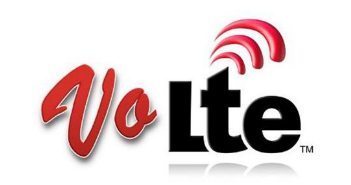Editor’s Note: Welcome to our weekly Reality Check column where C-level executives and advisory firms from across the mobile industry share unique insights and experiences.
In 2012, despite gains made in voice over LTE viability as a carrier option for delivering data and voice over 4G LTE networks through IMS cores, several industry pundits pointed out the elephant in the room: for optimum performance, VoLTE needs increased battery power from mobile devices. Since smartphones and tablets are coming stacked with more applications, this presents a significant problem to VoLTE developers – and one that might have stopped VoLTE from taking off as the new industry standard if solutions weren’t already in the offing.
Only those well versed in the mobile industry understand that LTE networks don’t yet support voice calls independently. Circuit-switched fallback is a technology whereby voice and text messages are delivered to LTE enabled devices through the use of a circuit-switched network. It’s needed because LTE is an all-IP network that cannot support circuit-switched calls. If a consumer uses an LTE-enabled phone for a voice call, the device “falls back” to the 3G or 2G network to complete the call or deliver the SMS text message. CSFB is often seen as an interim solution for LTE operators. VoLTE is considered to be the long-term goal for delivery of voice services on LTE networks.
Widely deployed in South Korea, and now slowly growing in popularity within the United States, VoLTE is the de-facto standard for carrying voice and SMS over LTE networks. With CDMA and GSM the gold standards of the past, VoLTE is ushering in an era of significant gains in audio quality, high definition and more. Since it’s IP-based, additional features can be layered on top of VoLTE services such as HD voice, real-time video call and instant message. But, as analysts rightly noted in 2012, these improvements are coming at a price: the need for more battery power.
Metrico Wireless conducted tests on VoLTE calls in early 2013. It found that a 10-minute call made over a CDMA network used 680 mW power as compared to a VoLTE call, which needed 1,368 mW. At first glance, this would appear to be problematic for mobile device developers. However, Andrew Kameka pointed out on MobileBurn that Metrico only tested a single device on a single network. In fact, Broadcom claims that its LTE modem consumes about 40% less power than 3G calls; it showcased this feature at the 2013 Mobile World Congress.
Until additional networks and devices become available for testing, it might be too early to really talk about the issue of battery drain – but we are. Amit Malhota, global director of insights at Spirent (which acquired Metrico in 2013), had an interesting comment on Metrico’s testing results. In an interview with GigaOm, he said, “The disadvantage in battery life of VoLTE compared to circuit-switched voice is driven by a few different factors. One is the more strenuous exercise of the device, including conversion of voice to packet data, transmission and receipt over the data network and reconversion back to voice. Another is the use of less power-efficient components such as data modem versus voice transceivers.”
In reality, there are already several ways developers could compensate for VoLTE’s need for more battery juice. The easiest and most OEM-friendly idea is to embed the VoLTE functionality in the mobile device’s LTE radio modem IC instead of using the main applications processor. Suffice to say, it’s like using a big V-8 truck (applications processor) versus a Prius (modem) to transport a small box of letters – which one will carry the same load with higher fuel efficiency?
So what’s the prognosis? The GSMA, an organization that represents mobile operators worldwide, reported at this year’s Mobile World Congress it expects no less than 20 operator VoLTE deployments this year. Among the U.S.-based operators, Verizon Wireless and AT&T have been testing VoLTE in the network and handsets, respectively, and Sprint has partnered with Broadsoft to manage its VoLTE migration.
VoLTE adoption will require the initial mass-market debut of the U.S.’s first multi-mode LTE-enabled handsets (2G/3G/4G) that support CSFB and VoLTE, and some of these products will include modem-embedded VoLTE. Just as when the initial 4G phones became available, expect to see improvements as these devices evolve; Verizon Wireless has already said that its offerings will still have CDMA on board as a backup, for now. That will change as the network’s reliability is tested and proven. And while tier-one carriers are looking to VoLTE to help with calling speed and quality, consumers will also see the carriers finally able to offer rich communications modes similar to WhatsApp, FaceTime, Facebook Messenger and other over-the-top messaging platforms.
It seems the VoLTE battery issue, while it is being evaluated by watchful developers, is really a non-issue … for now.
Doug Makishima is the COO of D2 Technologies, a recognized leader in VoIP and converged IP communications software for devices used in 4G networks that deliver voice over LTE (VoLTE). He can be reached at dmakishima@d2tech.com.

